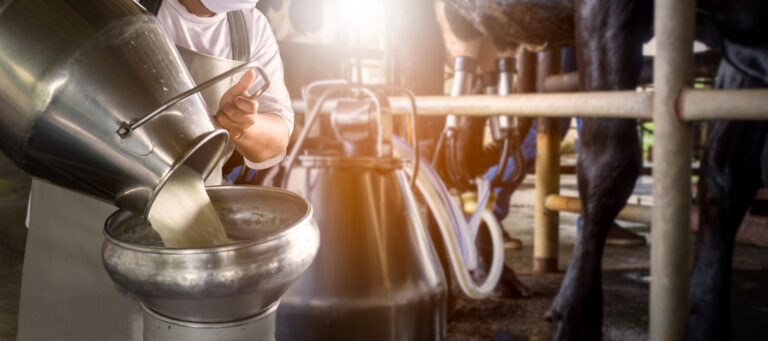The federal government prohibits interstate commerce of raw milk because it can contain disease-causing pathogens. Yet at least 29 states permit its intrastate sale to some extent, with eight states allowing virtually unrestricted sale at retail. Why is there such disparity, and can raw milk be safely consumed?
Let’s start with some general facts and the federal regulation: Raw milk is that which has not been pasteurized to kill existing bacteria. Pasteurization is a heat treatment that has been in use for decades to “kill dangerous bacteria and largely eliminate the risk of getting sick.” Because of the potential for illness, FDA issued a regulation in 1987 banning the interstate sale of raw milk. However, FDA does not have authority over intrastate sales, so each state can set its own regulations regarding the sale and distribution of raw milk.
The FDA regulation is backed by numerous scientific research articles, such as the CDC study, which cites a comparison of disease outbreaks from pasteurized vs. raw milk. Considering the diversity in the number of consumers of each, the study shows that the risk of outbreaks linked to raw milk is at least 150 times greater than that of pasteurized milk.
But there is another side to the story: Pasteurization is not the only way to control risk in raw milk. A dairy can get there by other means, but those means have to be validated. You have to control the risk and show that you’ve controlled it through a risk assessment. Such controls can include appropriate care and cleaning during the milking and bottling processes (e.g., cleaning animal udders as well as machinery, tanks, etc.; refrigerating the milk; and testing of the raw milk on a regular basis).
The Juice HACCP rule can be seen as an example of how risk can be controlled in raw, natural beverages. While most juice is pasteurized for safety, FDA allows the interstate commerce of raw juice if it meets GMP and Juice HACCP requirements, such as that for a 5-log pathogen reduction. This reduction must be accomplished for any “pertinent microorganisms” of public health significance likely to occur in the juice. A similar rule, relevant to the potential raw milk bacteria, could be developed for raw milk and its products to mitigate risk and increase safety. The goal being to reduce the risk, not necessarily to prescribe on how that risk is controlled.
The California raw-milk regulation, which is one of the most stringent of state regulations, provides another example. While not requiring its raw milk producers to meet HACCP standards, the state does require that the dairy farm be licensed and meet specific requirements, including:
- The dairy must hold a CDFA or a County Approved Milk Inspection Service permit and score at least 90% on the market milk dairy farm sanitation scorecard.
- The raw-milk livestock must be found negative for brucellosis and nonreactive for tuberculosis, as tested at least once annually by a CDFA, USDA or CDFA-approved/USDA accredited veterinarian.
- The raw milk cannot contain more than 15,000 bacteria per milliliter, more than 10 coliform bacteria per milliliter, or more than 600,000 somatic cells per milliliter for cow’s milk or 1,500,000 somatic cells per milliliter for goat’s milk. It must be cooled to and held at or below 45°F.
- The bottling or packaging facility must meet the sanitary requirements of a milk products plant, scoring at least 80% on the official scorecard; and all persons working with the raw milk must exhibit “scrupulous cleanliness” and not have any communicable disease.
Additionally, California requires that all raw milk and raw milk products bear a label stating: “WARNING Raw (unpasteurized) milk and raw milk dairy products may contain disease-causing micro-organisms. Persons at highest risk of disease from these organisms include newborns and infants; the elderly; pregnant women; those taking corticosteroids, antibiotics or antacids; and those having chronic illnesses or other conditions that weaken their immunity.”
Given all this, pasteurization was set as a federal protection for a good reason, but it is not the only way to control raw-milk risk. It is not surprising that when regulations are put in place, certain entities will look for “work arounds.” This can result in a significant increase in risk if the alternative approaches are not well controlled and regulated. So, when seeking to strike the most appropriate public health balance, rather than totally outlawing the interstate sale of raw milk, it may be time for FDA to take a new look at raw-milk regulation and consider the implementation of stringent requirements (such as referencing Juice HACCP) to manage and mitigate the risk.






